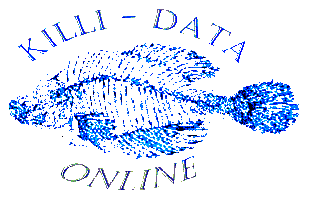INFOWEB 19 :
Aquarium LHT project, a new venture to boost killifish knowledge with dedicated killi-hobbyists
From Jean H. Huber
Private address: 7 Bd Flandrin, 75116 Paris, France
M.N.H.N., Ichthyology, PARIS, France.
Paris, May 15. 2016.
Dear Colleague, dear Aquarist!
This Aquarium LHT (life history traits) project is a very important new Killi-Data project, it is still scientifically minded, but it concerns all aquarists, killi-hobbyists who have a naturalist mind, i.e., those who observe their fish, breed them over several generations, keep separate precise populations and are members of a killifish association, or expressed differently, those who, when walking in the countryside, look in details at the flora and the fauna without necessarily knowing scientific stuff and are curious of their observations, say 95% of all.
Because this newsletter is very important for the future of the hobby and also for the future of killifish state of the art knowledge, and, because along its various versions many questions, comments and requests of clarifications have been received, it will be held differently… as answers to short questions.
Why is it necessary to start this project, now ?
There are several imperious reasons :
- curiously for this field of knowledge, and contrary to other fields like genetics, aging, or wild collections, for the aquarium life history traits, killifish are not at forefront of research and knowledge;
- at least two other groups with dedicated aquarists are more advanced in this field, cichlids and armoured fishes;
- while killifish researchers can use other techniques (DNA-RNA for molecularists, live and preserved specimens for morphologists and osteologists) they all lack data of early life as new items to develop diagnostic tools;
- killifish hobbyists, whether they are beginners, advanced or expert breeders, feel they are, for aquarium reports in magazines (global aquarium magazines or killifish association magazines), at a dead end (i.e., the era of small articles, witness reports, on various species maintenance and breeding has come up to an end, except for first reports of mainly newbies) because they have explored all groups in killifish breeding and maintenance reports, and to write another report about a newly described cryptic species would be a simple copy-paste of previous similar species reports;
- besides, it will give a new impetus or vigor to your hobby and will stimulate parallel field researches (wild life history traits) that are slowly developping (mainly for killifish fauna of temperate or subtropical countries).
What do I need to be a volunteer and start this project ?
To become a volunteer, well you need both to be a volunteer and to dedicate time, you do not need to be a member of a killifish association but it is strongly advised (because it is better to discuss your findings with others and finally to publish or co-publish them in a specialized printed magazine… even if you can do it alone and just send them to Killi-Data with the mailbox at the end of this page), and you need to have a solid breeding experience of the killifish population you are going to observe, and you need to have a sniper spirit or a hawk eye (to scrutinize details) and you need sheets of papers and a pen of course (or if you are a geek, the memo of your smartphone !) and you optionally need, apart from some of your aquariums, some special equipment (mind you, you only really need the first 2 items in the following list, and if you do not own them already it will cost you nearly nothing or, say, the equivalent of a few pieces of bread) and, complementarily, you may need your digital camera (if you decide to take pictures of the various development stages of fish from fry to juveniles and adults) :
- a transparent decimeter (as a ruler with a button to position it better on the glass of the aquarium or as a triangle soft set-square, or as a transparent protractor, for less than 5 Euro or US$);
- a good, not cheap, magnifying glass (about 10 Euro or US$);
- (not compulsory) a caliper, preferably a digital caliper, for egg detailed observations (about 20 Euro or US$… please avoid cheap equipments);
- (not compulsory) a binocular microscope or binocular glasses (multiplying by x20 to x40), for egg detailed observations (at least 150 Euro or US$… please avoid cheap equipments at 40 Euro or US$), or less scientific, magnifying glasses in plastic or glass (for about the same price).
As an interval to this long list of questions, here are some pictures of possible equipment that will be useful, but not unavoidable…
Useful tools making life easier or simply more scientific : transparent drawing rule with button, transparent soft set square, transparent protractor, magnifying lens, binocular magnifier with light, magnifying glasses, magnifying glasses professional, digital caliper.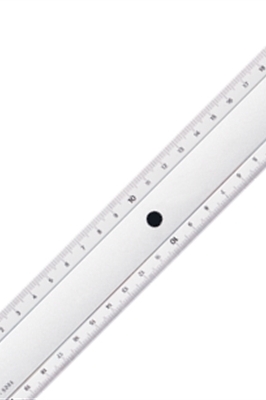
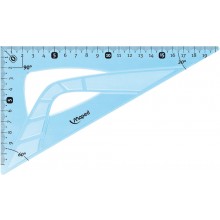
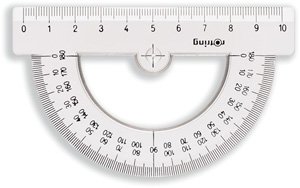
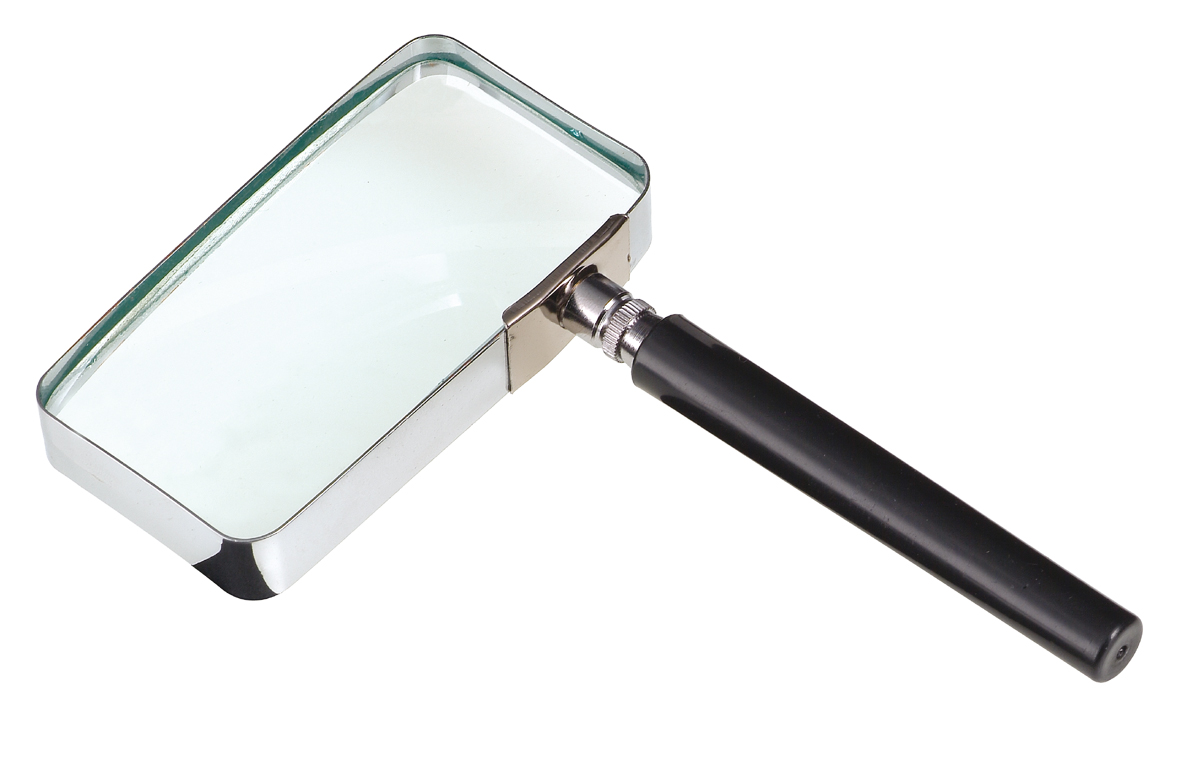
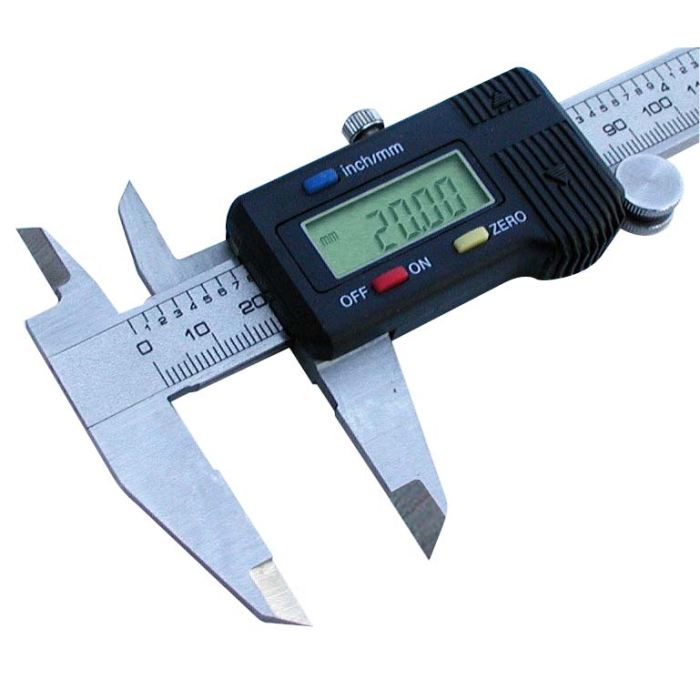
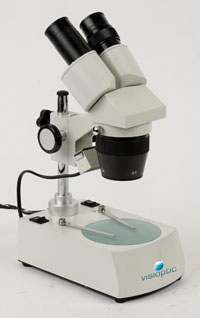
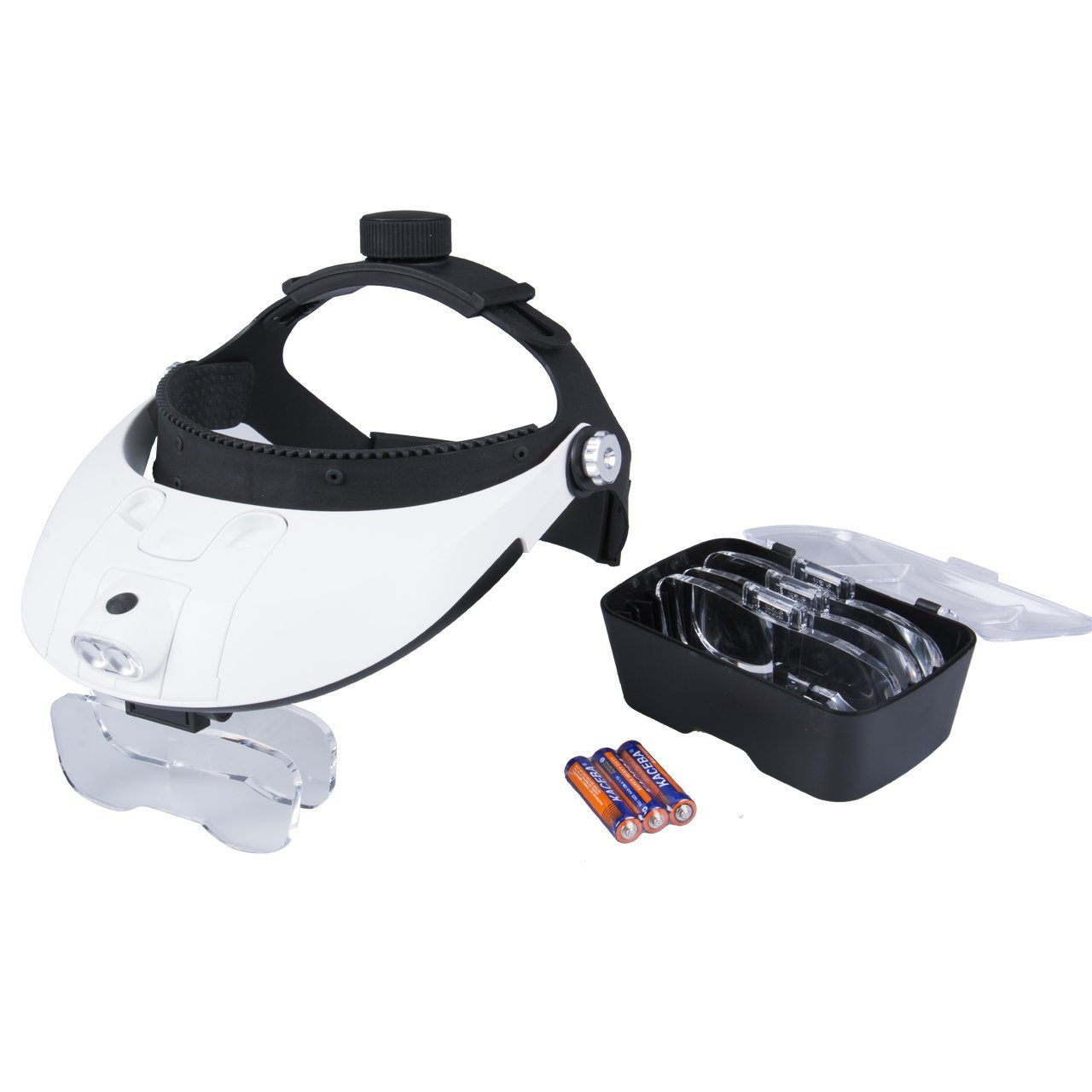
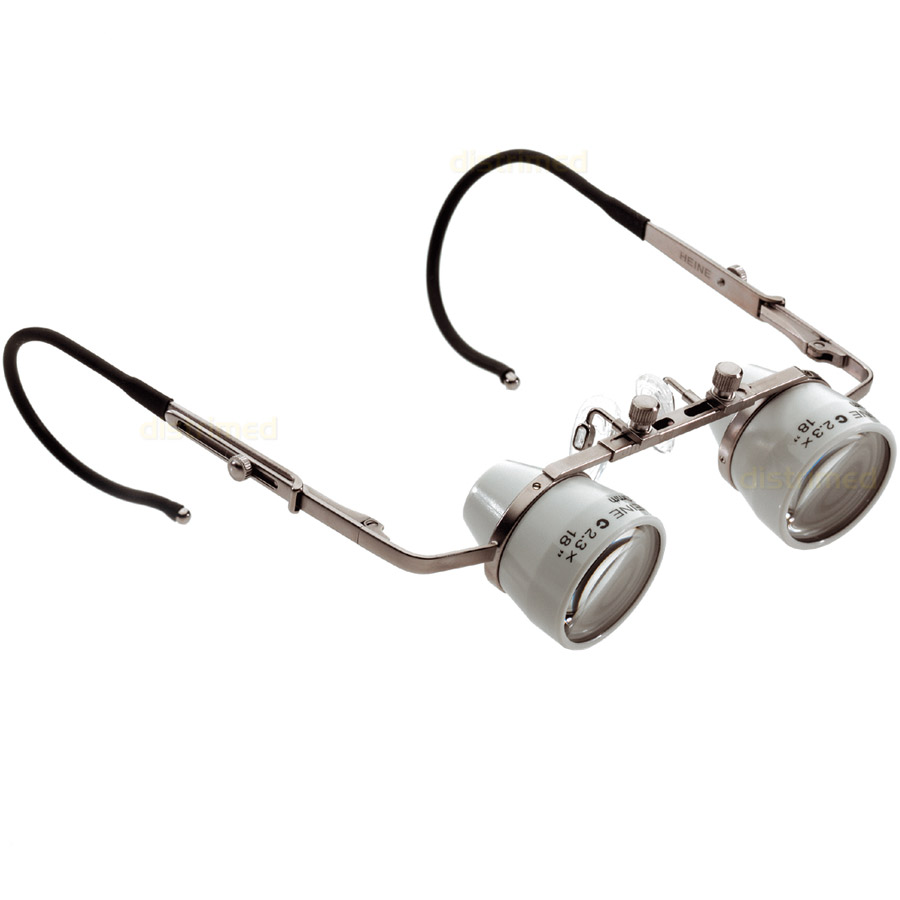
How would you honestly qualify this project, if I decide to start ?
Honestly you will have to dedicate time (this is the major constraint) because each day (not missing one) you will have to take a few minutes to look at your studied fish and write your observations ; for the rest, it is very flexible, since you must not answer all questions (I insist), you must not use all listed equipment and more importantly you must not pursue more than 1 species at the same time :
- 1 species-population only (that you have already bred over 2 generations, with rather steady in characters);
- a few minutes (not more than 5) each day;
- double check your observations;
- write down (or type) your observations, each day (do not postpone).
If I start, do I have to fill all questions and or use your units ?
Again, no, but make sure the information-observations you collect are serious, honest and double checked ; there are questions that need a microscope or equivalent (e.g., egg membrane structure) to be fulfilled and/or that are not designed for a standard aquarist… if a question seems unreachable for you, just skip it :
- bring what you can (research knowledge is most of the time incremental… just leave uneasy questions to others, more qualified);
- if you can, just use degrees in Celsius and lengths in decimal units or international total dissolved solids, but if not, that is not a problem (Fahrenheit degrees and inches, German or French total hardness, etc. will do as long as they are precise);
- you do not need to use a scientific reporting immediately as day 0 (day of collection), or day +5, etc. : just keep your habits (for example write the actual dates, each day (afterwards, you can translate those dates into day + x, easily;
- the date of collection is important (some people take notes on date of checking and counting the eggs, and for annuals, date of 1st, 2nd, 3rd wetting and hatching ratio ; for annuals, to record the moisture of the peat is optional (just an indication… do not change your habits) like the amount of peat stored with the eggs, although this might be an important parameter ; for incubation, you might take note of 2 different temperature stages as "room temperature" (e.g., 18°C-22°C) or "incubator" (25+°C).
What is the state of the art of killifish knowledge for those questions and how my contribution would be helpful or important ?
Well the state of the art for killifish is very variable according to the type of question and your data will anyway greatly help improvement of knowledge (seriously) and it will boost scientific research in several ways :
- data on patterns along development time in aquarium are totally unknown (yes !) for killifish (unlike other groups of fish) and your data will bring a revolution in knowledge and hopefully will help establishing new diagnoses for species (or groups of species) parallely to molecular and morpho-osteological data ; honestly this is the major stake (and priority) herein and, good news, this is easily accessible for aquarists (just time, little equipment, but hawk eye, double checked, qualitative observations);
- data on growth are very poorly known and documented except qualitatively and except in rare species from temperate or subtropical regions (by scientists) ; usually people say that growth seems to be dependent on too many factors (on how many fish per tank, on water quality, on temperature, on food, on the number of generations since wild) to be able to give a typical growth rate, but it seems short because in the wild those criteria are not present or they are just part of aleas (hazard… then statistically quantifiable) ; based on your data scientists will be spurred to start scientific experiments with controlled variables;
- data on egg diameter, on incubation time, on maximum aquarium size are usually known for most species, but their variations are poorly known and above all the reasons of those variations are fully unknown ; based on your data scientists will have clues, hints and they will be spurred to start scientific experiments with controlled variables;
- data on egg structure are sporadically known for killifish, nothing systematic, then with poor outcome and understanding;
- data on behavior are scientifically available for few species in killifish (mainly from temperate or subtropical regions) and sometimes those data are quite old and done with methods that are not considered as solid today.
What are those questions you are keeping away up until the end ?
OK, here you are :
- read first the list slowly and carefully;
- select those questions that you feel are achievable for you, depending on time and experience;
- select the (one) aquarium population (note : a "good" location code, including country, collector, number of collecting spot, or just an additional name ; good example : "ARG BPVB 2014-09", bad example "nigerdelta";
- copy-print your selected questions on papers (as models for you… to be customized to your own situation), make it "your" project.
IMPORTANT FOREWORD : you can either answer "your" questions one after the other OR write a chronological report step by step from day of hatching, as "week 0" or to be even more scientifically "day 0" (everything, you notice) || xxxx ||, then "week 1" or to be even more scientific "day X" (everything, you notice as different from previous or new) || xxxx ||, etc. [and even you may start chronologically earlier with negative dates, "week -x" or "day -x" corresponding to date of egg collection, the time in weeks or days before "week 0" or "day 0" being obviously the incubation time]
* Aquarium population full name : || xxxx || [compulsory]
* Number of own-bred aquarium generations (is it continuously or with a break ?): || xxxx || [compulsory]
* Aquarium fish conditions (water temp.°C, pH, TDS or total dissolved solids, hours of light, weekly variations, tank size, number and sex of fish kept together in breeding aquarium, etc.) : || xxxx || [compulsory]
* Egg conditions (incubator temperature of maintainance in °C all along embryonic development, equal or not to roomtemperature... if not constant temperature, state the fluctuations... if not in water, state the substrate and its wetness as "very dry", "dry as tobacco", "wet then dried a few days", "wet and pressed"): || xxxx || [compulsory]
* Number of egg(s) laid at the same time [this question require actual breeding observation]: (e.g., only one, OR several, each one separated by time and place, OR several, each one at about the same place but not during the same sexual embrace, OR several, each one not at the same place but during the same sexual embrace) || xxxx ||
* Size before hatching (diameter): (using your magnifying lens and decimeter) || x.x mm ||
* Structural pattern of the membrane (outer surface) all around and specifically near the micropyle (a very small hole through where the spermatozoid penetrates the ovule) [this question requires usage of a binocular lens equipment or similar and reserved to scientific-minded aquarists]: (structure may be hexagonal, irregular, with hairy filaments of various sorts or not, filaments being identical or not near the micropyle) || xxxx ||
* Possibility of alternate successful development pattern (state if experienced, e.g., on semi-dry material if a non-annual species, on wet or semi-wet substrate if annual or semi-annual species): || xxxx ||
* Hatching: after how many weeks (or days) of incubation, on average (as above, for "your" conditions), state if fluctuations are related to season, light, temperature, etc. || xxxx ||
* About what percentage (roughly) of laid eggs does normally hatch: (for annuals, it is the total percentage, i.e. after several waterings) (here you need to start with a counted number of eggs, at least 50) || xx % ||
* On hatching, offspring swims immediately freely or needs a few hours or even needs 2-3 days before free swimming [this observation does not concern belly sliders] || xxxx ||
* On hatching (with your magnifying glass and decimeter... not easy... remember you have to discount your measurement by 30% in case of an in-between aquarium glass), size of offspring (total length) [if too difficult give an estimate of net size after several rough measurements, like xx mm net +/- x mm] || about xx.x mm net ||
* On hatching (with your magnifying glass), offspring has no pattern on body or fins (respectively offspring has so and so pattern on body and/or fins, please be precise and complete) || xxxx ||
* First free swimming in aquarium : (close to water surface, anywhere in water, confined to bottom) || xxxx ||
* One week after hatching (with your magnifying glass and decimeter... not easy... remember you have to discount your measurement by 30% in case of an in-between aquarium glass), size of offspring (total length) [if too difficult give an estimate of net size after several rough measurements, like xx mm net +/- x mm] || about xx.x mm net ||
* Two weeks after hatching (with your magnifying glass and decimeter... not easy... remember you have to discount your measurement by 30% in case of an in-between aquarium glass), size of offspring (total length) [if too difficult give an estimate of net size after several rough measurements, like xx mm net +/- x mm] || about xx.x mm net ||
* Four weeks after hatching (with your magnifying glass and decimeter... not easy... remember you have to discount your measurement by 30% in case of an in-between aquarium glass), size of offspring (total length) [if too difficult give an estimate of net size after several rough measurements, like xx mm net +/- x mm] || about xx.x mm net ||
* Describe when and where the various greyish-black markings (melanism) appear (e.g., "week 0" or "day 0" if already markings on hatching and various places such as Dorsal fin, Anal fin, Caudal fin, chin, head (where), sides (where), then x, y, z,(etc.) weeks (or days) and again various places, please be precise and complete) : || xxxx ||
* Describe when and where the various greyish-black markings (melanism) appear (e.g., "week 0" or "day 0" if already markings on hatching and where such as Dorsal fin, Anal fin, Caudal fin, chin, head (where on head), sides (where on sides), then x, y, z, (etc.) weeks (or days) and again the concerned places, please be precise and complete) : || xxxx ||
* Describe when and where the various colors (yellow, red, blue or green) appear (e.g., "week 0" or "day 0" if already markings on hatching and where such as Dorsal fin, Anal fin, Caudal fin, chin, head (where on head), sides (where on sides), then x, y, z, (etc.) weeks (or days) and again the concerned places, please be precise and complete) : || xxxx ||
* At about what time (in weeks) and size (in % of maximum development and in mm), is it possible to separate sexes : || x weeks (or x days) and xx% of full maximum development (at xx mm net total length) ||
* By which initial criteria are you able to separate sexes (e.g., size, colors, markings, behavior, fin extension, etc.): || xxxx ||
* By which sequence of criteria and when (in weeks after hatching) are you able to fully separate sexes (e.g., size, colors, markings, behavior, etc.): (one by one character, chronologically) || xxxx ||
* What is the approximate sex ratio (balanced, unbalanced, e.g. 1M:2F, 2M:1F, etc.) after full sexation (remember it will depend on conditions stated for fish and for eggs) : || xxxx ||
* At about what time (in weeks or days) and size (in % of maximum development and in mm), is it possible to point out maturity (first attempts to breeding are observed) : || x weeks and xx% of full maximum development (at xx mm net total length) ||
* What is the approximate sex ratio (balanced, unbalanced, e.g. 1M:2F, 2M:1F, etc.) after full maturing (remember it will depend on conditions stated for fish and for eggs) : || xxxx ||
* Have you ever observed a sex reversal along life cycle (describe it, and which way): || xxxx ||
* Have you ever observed albinos or xanthic forms (describe them, and how): || xxxx ||
* Have you ever observed belly sliders (describe them, and how): || xxxx ||
* What is the approximate full (maximum) male size in aquarium and after how long is it normally reached: || xx mm and x weeks ||
* What is the approximate full (maximum) female size in aquarium and after how long is it normally reached: || xx mm and x weeks ||
* Describe precisely the chronological steps of development of male after sexation in terms (for each) of color, morph, shape for body and each fin (and date each of them by number of weeks or days after hatching): || xxxx ||
* Describe precisely the chronological steps of development of female after sexation in terms (for each) of color, morph, shape for body and each fin (and date each of them by number of weeks or days after hatching): || xxxx ||
* Describe precisely the patterns (for each) in male that disappear and/or become faint along development (and when in weeks or days after hatching): || xxxx ||
* Describe precisely the patterns (for each) in female that disappear and/or become faint along development (and when in weeks or days after hatching): || xxxx ||
* Describe precisely the alternative patterns when breeding (nuptial pattern) developed by male (i.e., different from standard mood): || xxxx ||
* Compare precisely the patterns and morphs of dominant male (vs. dominated breeding male and non breeding male): || xxxx ||
* Describe precisely the alternative, additional, temporary patterns that appear when breeding (nuptial pattern) developed by female (i.e., different from standard mood): || xxxx ||
* Describe precisely the alternative, additional, temporary patterns that appear when stressed (intraspecific threat) developed by male (i.e., different from standard mood): || xxxx ||
* Describe precisely the alternative, additional, temporary patterns that appear when stressed (intraspecific threat) developed by female (i.e., different from standard mood): || xxxx ||
* Describe precisely the optional patterns developed by male (e.g. 2 or 3 color phases, blue, yellow and red like in Nothobranchius) in a single offspring generation (and give approximate percentages) : || xxxx, xx% ||
* Describe precisely the major variational patterns developed by male (i.e., different, derived, from standard or from wild fish, e.g., optional submargin at a given fin, occurrence of an atypical character, varying number of spots on sides, number of dark bars on side, shape of fins) in specimens of a single offspring generation (and give approximate percentages) : || xxxx, xx% ||
* Describe precisely the major variational patterns developed by female (i.e., different from standard, e.g., optional submargin at a given fin, occurrence of an atypical character, varying number of spots on sides, number of dark bars on side, shape of fins) in specimens of a single offspring generation (and give approximate percentages) : || xxxx, xx% ||
* Describe shortly the standard behavior in aquarium (loose groups, schooling, territorial, tribe as harem, tribe including subadults and secondary males, territorial, fry caring, etc.) and at about what time in weeks after hatching it is developed : || xxxx, xx weeks ||
* Describe shortly the standard behavior in aquarium of adult male (various types, dominant or not) and at about what time in weeks or days after hatching it is developed : || xxxx ||
* Describe shortly the standard behavior in aquarium of adult female (various types) and at about what time in weeks or days after hatching it is developed : || xxxx ||
* How long is the normal lifespan (in months) in aquarium : || xx months ||
* How long is the maximum lifespan (in months) in aquarium : || xx months ||
* Open (synthetic) additional comments on aquarium life history traits : || xxxx ||
* Do you agree on the publication of your observations aquarium life history traits in a (possibly peer-reviewed) magazine (in addition to a synthetic version in the database), if you submit your data to Killi-Data : || yes/no ||
What are the possible chances of success of such a project ?
Success or failure for this project would not be appraised in terms of the number of full received reports, say after 2 years, but in terms of incremental improvement of knowledge, on a long term basis ; this project is, I know, bold and ambitious, and finding amateur people who have the scientific spirit, the willingness and the precise organisation to collect those good data is going to be a real challenge ; time will tell but reality is the cruel lack of aquarium life history traits data for killifish ; hopefully, (some) aquarists will find the challenge worth taking in order to escape from the nice but vague and too much qualitative and uncomplete usual breeding reports that have been published so far, during the last 40 years ; let's repeat, it is not a Killi-Data project, it is just a compelling community project for all true hobbyists (otherwise it is easy to imagine a routine hobby evolving towards sterility and more) ; for the early drafts of this project, people honestly answered to some questions, even easy looking ones, "this question is beyond my capacities and I shall not be able to find the time (actually with my long experience of dealing positively with dedicated aquarists, I believe this is more a message of fear, i.e. the fear of being unable to finish up, the fear of judgements-criticism by colleagues, the fear of mistakes and errors, the fear of the mountain of questions… but I know the story, I insist many times, and always the story ends up after a real try and success by "excellent and rewarding, I could not imagine I would be capable to achieve that !") ; finally let's extend a word of warmest thanks to the many contributors, mostly K-D-I members but also non killifish breeders and scientists, to build this questionnaire or for their comments and support and more personally to Christian Koepp (Germany) and Neli Martin (Spain, see his photo hereafter)), who have been highly motivated along the project ; besides, this editorial newsletter will need to be precised and improved over time in order that the list in the questionnaire is better and clearer understood (such a major project will not be finalized in a single day).
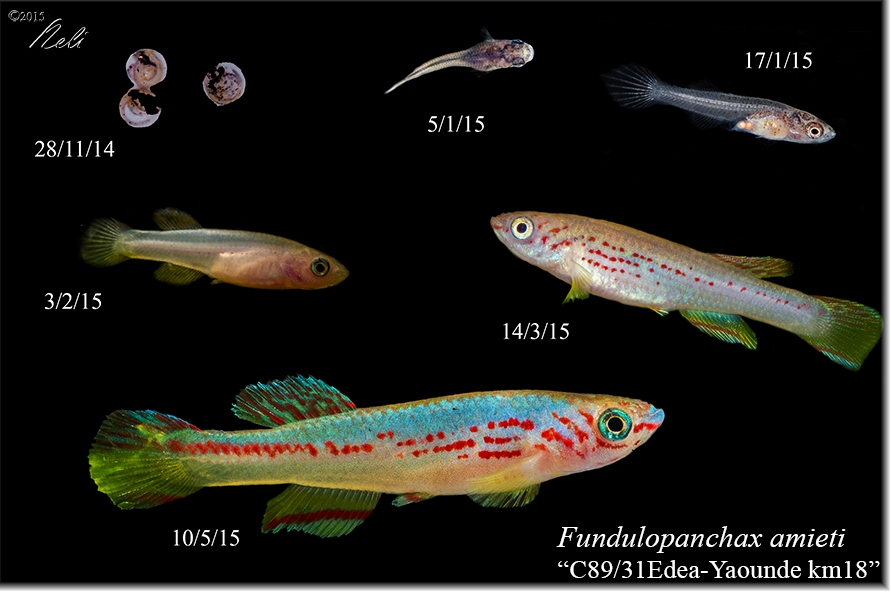
In total a very important and sensitive newsletter !
Hopefully a boost to our community and a spur to speed up knowledge progress on our (beloved) fishes !
Take care and enjoy the scientific or aquaristic complexity of killifish !
Do not hesitate to ask questions for future Newsletters.
Visit frequently the website www.killi-data.org !
Thank you for your support over the years.
With my kindest regards.
Jean
I am interested in reading other Newsletters, click INFOWEB.
